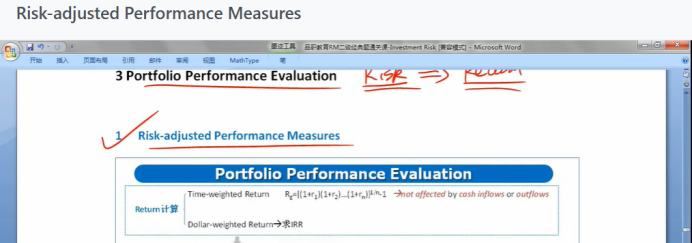NO.PZ2023101902000043
问题如下:
You make an investment over two periods, from today (T0) to the end of the first year (T1), and then to the end of the second year (T2). Today (T0), you buy one share at a cost of $10.00. The stock pays a $2.00 annual dividend. At the end of the first year (T1), your single share pays a $2.00 dividend; and, as the price increased by only $1.00, you buy a second share at a cost of $11.00. By the end of the second year (T2), the stock price has soared to $18.00. You then decide to collect both dividends ($2.00 for each share) and sell both shares, for total proceeds at the end of the second year (T2) of $40.00. What are, respectively, the time-weighted (aka, geometric) and dollar-weighted (aka, internal) rates of return?选项:
A.36.5% (time) and 45.8% (dollar) B.49.7% (time) and 56.3% (dollar) C.53.7% (time) and 60.0% (dollar) D.60.2% (time) and 71.2% (dollar)解释:
7% (TWR) and 60.0% (dollar-weighted). Time-weighted (geometric) return: R(1) = (11+2-10)/10 = 30%; R(2) = (18+2-11)/11 = 81.818%; R(G) = (1.3 ×1.81818%) (1/2) - 1 = 53.74% Dollar-weighted return: 10 + 11/(1+r) = 2/(1+r) + 40/(1+r)2; 10(1+r)2 + 9(1+r) - 40 = 0; let a = (1+r): 10a2 + 9a - 40 = 0; (5a - 8)(2a + 5) = 0, such that 5a = 8, a = 1.6 and r = 60%.R(G) = (1.3 ×1.81818%) (1/2) - 1 = 53.74% Dollar-weighted return: 10 + 11/(1+r) = 2/(1+r) + 40/(1+r)2;
这一段的公式是什么?是哪一科的哪一章内容啊?





